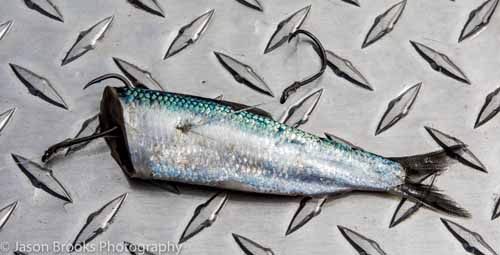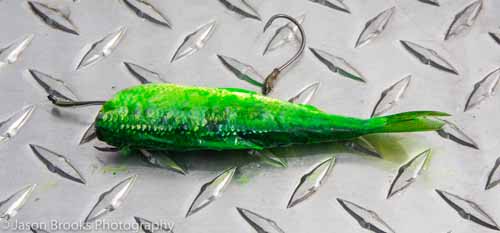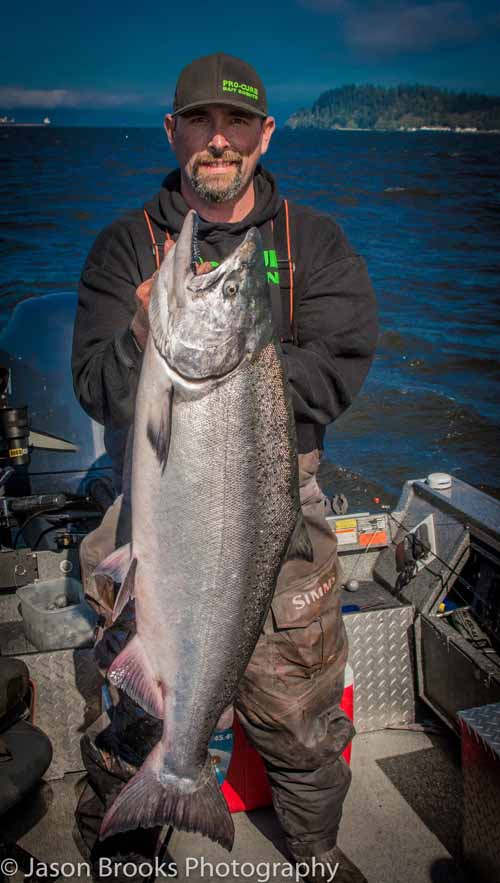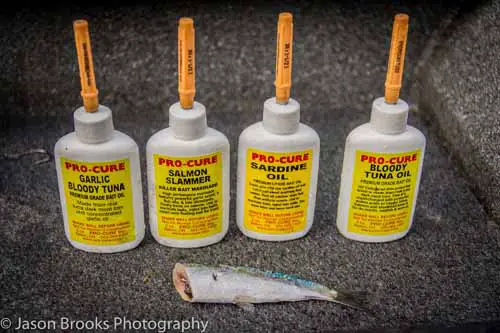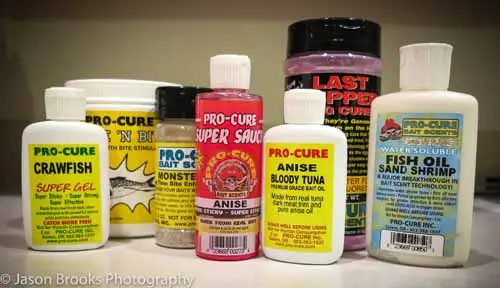Search
Latest Articles
Making Sense of Scents
by Jason Brooks, September 01, 2016
My counterpart kept fishing the seam and edge of the shadows while I rummaged through my tackle box in an effort to think of something else to try. It was then that I found the small sample bottle of sand shrimp oil. A buddy of mine had gone to a seminar and the speaker was discussing topics about different techniques and each attendant was given one of these small sample bottles. By my luck that buddy had left the bottle in my gear box during a summer steelhead trip. I quietly and discretely put a few drops of the oil on my eggs and cast behind my friend who was still trying to catch a fish. My float only made it a few feet before I had a “bobber down” and set the hook hard. That was the first of three fish I landed before I let the secret out and handed him the sample bottle. I thought it was funny but he didn’t.
Scents can and do make a very big difference but if you have ever walked down the isles at your local sporting goods store and noticed all the different types of scents, cures, and bait additives then you might find yourself a little confused. I have fished for many years, curing my own baits and experimenting with scents and additives but it wasn’t until I had a chance to fish with Jason Hambly of Pro-Cure this past month that I learned a few additional pointers that really put things into perspective on making sense of scents.
Anglers need to realize why they are using the scent, cure, or additive to understand fully the benefits of it. Another friend who rarely fishes had a neighbor give him some salmon eggs and he wanted to cure them up so he ran to the store and bought some Bad-Azz Bait Dye, promptly stained his kitchen counter and failed at curing the eggs. He called me to ask where he went wrong and I told him that he was using a super strong bait dye, not a cure. This is an example of knowing why you are using what you are using so you can use the right product.
Scents, are just that. They add scent to your bait or lure. Hambly agreed with me when I explained that scents are used for two primary reasons. The first of course is to scent up or add additional scents to your bait or lure. This is where the type of scent you use or “flavor” of scent makes the difference. If the fish, like the Chinook of my favorite fall river, prefer sand shrimp then this is the scent I use. Other times it’s Bloody Tuna or Anchovy and so forth. The other primary reason is to cover any unwanted scents on the bait or lure such as human oils, gasoline, reel grease, and other odors that have transferred to your bait or lure. This is where non-bait scents, like Anise or Garlic, are very useful. Sure, these scents also attract fish and can bring on a bite.
So, now you have decided on what scent you want to use but now you need to know how to use it. Pro-Cure makes scents in many different forms such as Bait Oil, Super-Gel, Sauces, Powders, Water Soluble, Deadly Dunken’, Heavy Liquid, Ice Fishing Gels and the new Super-Sauces.

This is the type of scent, each with a different application. For most of us in the Northwest we have three basic uses and can use the right type of scent (not to be confused with flavor of scent) for our applications. Bait anglers primarily use Water Soluble or Bait Oils to add to their baits, either herring, anchovies, eggs, sand shrimp, dough baits, corn, or any other bait we like to use and let it soak for several hours or days before use. This infuses the bait with the scent. The second use is to be put onto the lure itself which it where Super-Gels, Super-Sauces, and Water Soluble scents are mostly used. For the gear with yarn or a floating attractant like a Yakima Bait Lil’ Corky or Mack’s Lure Pill Float I prefer to use the Super-Gel as it sticks to the yarn and can be pushed into the hole of the floating attractor. The Super-Gel last a long time so I don’t have to re-apply a lot which means my gear is in the water longer. Water Soluble is for jigs with marabou as it won’t interfere with the action of the jig but since it mixes with water I re-apply after every few casts. The third application is where we put scent on our attractors and gear (and also on the lure itself) and for this I like the new Super-Sauces. They really stick and last a super long time. I will smear it all over my dodger or flasher if trolling for Kokanee, Salmon or trout. It also sticks to plugs very well and can fish for an hour or more so if you are back trolling plugs this is a great product to put onto the bill of the plug. Same with spoons, as it sticks and won’t come off.
This brings up an important part of using scents, if the Super-Gel, Super-Sauce or Bait Oil is stuck to your gear how can you clean it off. For most gels and oils just have a bucket of warm soapy water, preferably Lemon Joy, and soak your gear and then give it a good scrub. But Jason Hambly added that another way to get the sticky gels off of your hardware is to use WD-40 as a solvent. This also lubricates hooks, eyelets, and split rings and keeps them from rusting when you put them away at the end of the season.
So, how long will a bottle of scent last? Well, for me I go through a bottle in a couple of trips as I like to use scents heavily. But at the end of the season most of my bottles get tossed and I buy new right before the next season. Hambly pointed out to me that it’s not necessary to toss out the “old” bottles as scents and oils will last from 5 to 10 years as long as you keep them out of any high heat, sunlight, or other things (like leaving them in the boat over winter as it’s parked beside the house out in the elements). But make sure you wipe down the outside of the bottle as the gels and oils will draw dirt and debris and this will get onto your hands which in turn can end up on your bait or lure. Keep the bottles clean, dry, and cool and you can store the products for many years.
Now that we’ve talked about scents, here’s a little info about cures, additives, and dyes. Bait cures are just that; they cure the bait to make them fishable. Some come with added scents, like my favorite egg cure, Pro-Cure Redd Hot Double Stuff Tuna Flavor Egg Cure. This cure is simple to use and already has added scent. But for other cures you can add scents like Anise, Bloody Tuna, or Sand shrimp bait oils or water soluble oils. The idea of the cure is to toughen the bait, using the baits natural scent, and you will notice that most guides will not tell you what their cure is made of as well as if they add any scent. Additives are scents as well as other things like Pro-Cure Monster Bite which has Amino Acids or their Slam-Ola powder that toughens the bait and adds bite stimulants. Powdered Krill is another additive that can be sprinkled on eggs for winter steelhead or on herring wrapped plugs for Coho and Chinook. Dye’s color the bait and can be added to cures during the curing process or as a separate process such as coloring plug cut herring. UV Dye’s adds a whole new dimension of coloring and altering baits.

So, now when you walk down the scent and cure isle of the sporting goods store you can select the product you need as well as the scent you want to use with confidence. Depending on what technique, type of water conditions, and species of fish you are targeting you can get the right products to make you more successful.

